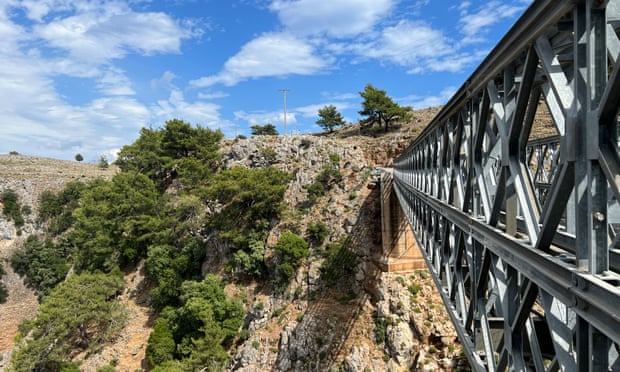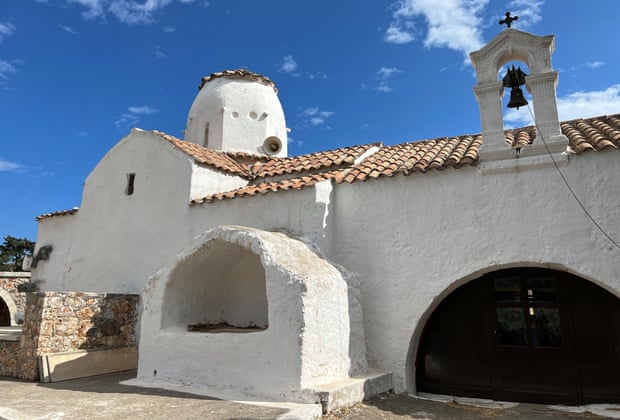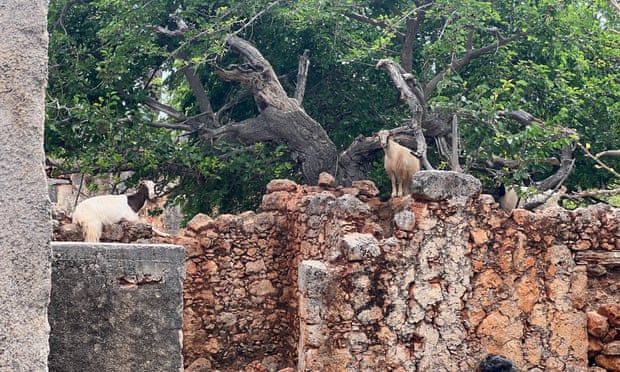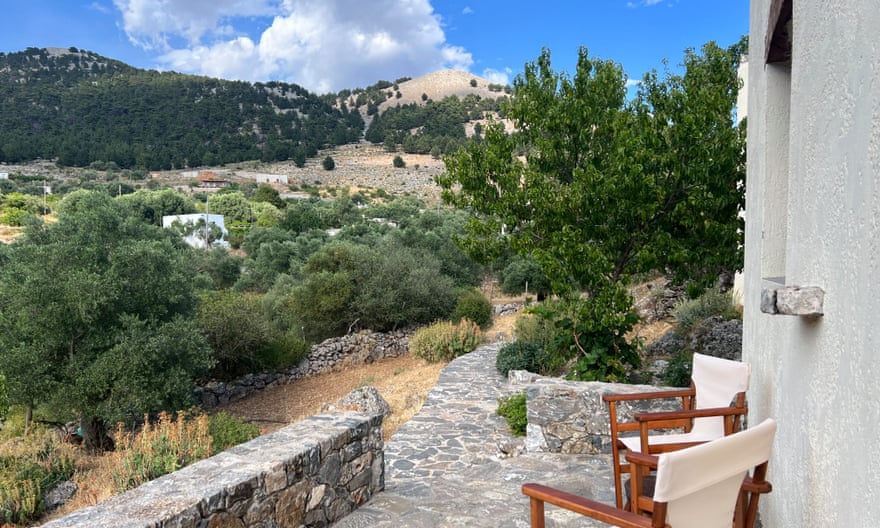‘Tonight there will be you and me and the goats,” my guide Vassia Mastrogianni explained as we began our car journey into Crete’s White Mountains. At the wheel was Antonis who, ominously, Mastrogianni had just introduced as “a very good driver.” It wasn’t long before I could see why, as the road became a tangle of ascending switchbacks and plunging valleys. It was the kind of road that would have caused a meltdown had I been the one driving.
We were headed for a remote mountain guesthouse in western Crete, where the deep creases of Samaria national park rise up to limestone crests more than 2,000 meters high before crashing into the southern coast. For half the year the White Mountains are slick with snow, but in summer the rocky summits are famous for their gleaming, milky complexion, continuing to give the appearance of snow long after it’s all but melted away.
Crete’s White Mountains, Lefka Ori in Greek, are about as far away as you can get from your typical sun, sea and sand Greek island holiday. Our ride through the foothills was layered with olive groves, clumps of wild thyme and bushy vineyard blocks bookended by twinkling ocean. Bearded vultures careered overhead. Nonchalant goats slowed our progress into the mountains as they grazed by the roadside.
My trip here was part of Intrepid Travel’s new Highlights of Crete itinerary – the B Corp tour operator’s first foray into Crete. Starting in Heraklion and ending in Chania, the tour combines mountain and gorge hikes with boat-hopping on Crete’s south coast and visits to meet artisans and small local food producers.
It’s been designed through a new partnership with Meet (Mediterranean Experience of EcoTourism), a non-profit organization that supports protected areas and the people living in them by developing sustainable experiences to help disperse tourism.

“We’ve always had concerns about overtourism, as a whole, and most definitely in the Med,” Zina Bencheikh, Intrepid Group’s managing director for Europe, the Middle East and Africa, told me. Because of this, Intrepid has historically steered clear of sun, sea and sand destinations such as the Greek islands.
Bencheikh hopes that the partnership with Meet will help Intrepid finally break into some of these destinations in a sustainable way. “We want to demonstrate that it’s possible and that it can be very enjoyable as well,” she said. Crete and Croatia are the first two collaborations, and there are three more in the pipeline.
On the edge of Samaria national park, we stopped at the yawning mouth of Aradena gorge to take a walk through an abandoned stone village torn apart by a 1940s vendetta. The heinous crime? A goat’s bell, taken by a boy who then refused to return it. Seven people died because of the family feuds that ensued, said Mastrogianni, resulting in a slow exodus from which the village never recovered. Such travesties characterized an era of deprivation and lawlessness after the second world war, when Greece was racked by civil war and the White Mountains harbored militia and guns.

But now there are signs of life in the village again. Amid the goats and rubble, some families have returned to rebuild their houses. A waymarked walking trail through the village is bringing tourists. The vertiginous bridge connecting Aradena and this south-eastern pocket of Samaria national park to Crete’s road network was only built in 1987, but is in itself now an attraction. We found a bungee jumper there, goading himself to dive into the throat of the 138-metre-deep gorge from a metal platform.
Ten minutes further down the road, our base village of Agios Ioannis emerged out of nowhere as a cluster of houses sprawled across an 800-metre-high plateau. Here, the seven-room Alonia Guesthousewhere we would stay, was built by resident Antonis Georgedakis and his uncle in the early 2000s, after the arrival of the bridge.

“When I was young there were no cars and no roads. It was very different,” Georgedakis told me, as we picked our way between limestone boulders as big as grazing flocks of sheep, on a woodland hiking trail cleared and waymarked with help from Meet. “It took two hours to get to the next village.”
A strong scent of pine hung like incense in the close air as we headed gently downhill to a clifftop clearing where a sparkling bay hooked around the southern Sfakia coast – a region where small villages are connected by water taxis and footpaths alone. Far below, the sea lapped at the doors of a 1,000-year-old church as small as a chess piece.
Beyond it, Georgedakis pointed out Agia Roumeli, the small coastal town at the exit of the Samaria Gorge – Crete’s second most visited tourist attraction after the Palace of Knossos. Despite being so close, there is no road to Samaria from this south-eastern swathe of the national park. Agios Ioannis felt utterly disconnected from it.

In Samaria, Meet’s objective is to promote low-impact tourism that helps preserve the traditional culture and the natural environment that is so undisturbed in this area of the park. But local businesses must meet strict sustainability criteria before coming on board. For Alonia Guesthouse, this involved reporting huge amounts of granular business data – from how much rice is used in the guesthouse meals and the consumption of fuel used in its daily activities, to how many kilowatts and cubic meters of water are consumed each year.
That evening, at the instruction of our hosts, we didn’t eat until the bees had gone to sleep. The light of a silvery moon illuminated the mountaintops like a floating specter – and there was no rice on the dinner table. Only specialties such as Cretan salad with mizithra cheese, boureki potato pie, sweet pork and butter-soft lamb with heaped mounds of creamy tzatziki and Greek fava dip drenched in local olive oil. Invisible goat bells played an erratic tune, like a toddler running riot with a tin can through the hills. Tomorrow we would discover the little-visited Sfakia coast, but I knew that I’d be reluctant to leave these mountains.
www.theguardian.com
George is Digismak’s reported cum editor with 13 years of experience in Journalism